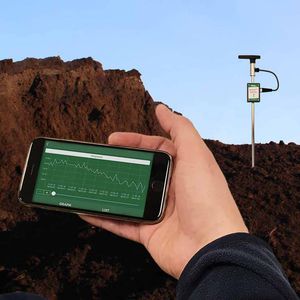
- Farm Management
- Measuring instrument
- Soil compaction tester
- Martin Lishman Ltd.
Soil compaction tester




Add to favorites
Compare this product
Characteristics
- Penetration depth
15 in
Description
The soil compaction tester helps to identify if soil compaction is a problem, how deep the compaction layer is and how compacted the soil is. It gives answers to the questions you need to ask about your tillage methods and field conditions and helps to avoid the potentially high cost of soil compaction.
The Importance of Compaction Testing
Compaction can adversely affect nearly all physical, chemical and biological properties and functions of soil; it is regarded as the one of the costliest problems caused by conventional agriculture. Pressure caused from the use of heavy machinery and inappropriate soil management can lead to the compaction of subsoil, creating impermeable layers which causes the soil to restrict water and nutrient cycles. This can cause abnormal root growth and can lead to reduced crop growth, yield and quality as well as increased surface water run-off and soil erosion.
Push the soil compaction tester into the soil, record the depth at which the 300lbs level is exceeded, using the gradients on the penetrometer rod. This level is the top of the compacted zone. Continue pressing the compaction tester down. Record the depth at which the penetration falls below 300lbs. This is the bottom of the compacted zone.
Key Features
•Soil compaction tester with built-in pressure gauge
•Easy to read colour coded stainless steel gauge gives compaction pressure readings at different levels
•Stainless steel probe with 3″ graduations
•Strong stainless steel housing and handle
•Supplied with two tips for firm soil and soft soil
VIDEO
Catalogs
No catalogs are available for this product.
See all of Martin Lishman Ltd.‘s catalogsRelated Searches
- Temperature management system
- Temperature datalogger
- Building monitoring system
- Wireless management system
- Temperature thermo hygrometer
- Soil sampler
- Remote management system
- Crop monitoring system
- Grain sampler
- °C thermometer
- Grain moisture sensor
- Silo monitoring system
- Digital thermo hygrometer
- Portable soil sampler
- Probe thermometer
- °F thermometer
- Digital temperature probe
- High-precision moisture sensor
- USB data-logger
- Moisture soil sampler
*Prices are pre-tax. They exclude delivery charges and customs duties and do not include additional charges for installation or activation options. Prices are indicative only and may vary by country, with changes to the cost of raw materials and exchange rates.






